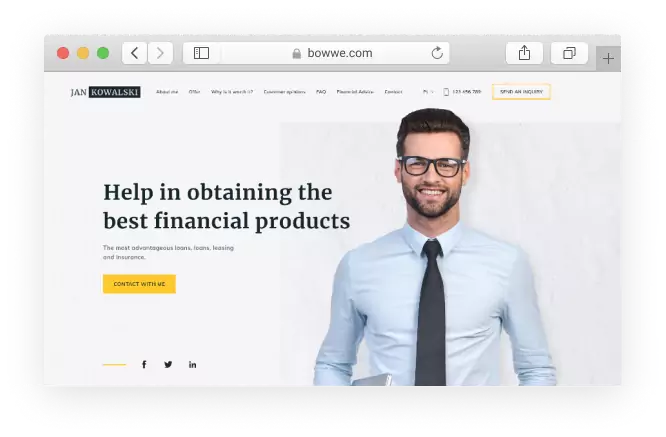Introduction to CRO and Its Importance for eCommerce Websites

Author: Harold Ader

Getting potential customers to land on your site is just the tip of the iceberg when it comes to selling your products or services. Various factors determine whether your visitors will or won’t make a purchase.
CRO in eCommerce is often an overlooked part of the marketing journey. Every online business is different. However, a small, sustained growth in conversion rate can make a dramatic difference to your bottom line.
On this page, you’ll learn more about CRO and different areas of the eCommerce user journey that you can optimize to drive more conversions and increase your revenue.
What Is Conversion Rate Optimization?
CRO (conversion rate optimization) is the practice of increasing your conversion rate by leading visitors to your website to take specific actions like buying a product or service, subscribing to a newsletter, or downloading a PDF.
While CRO is usually used to make small, gradual enhancements, its wider purpose is to optimize your entire marketing process, making everything work smoothly. The more optimized your marketing process is, the higher your conversion rate will be.
The Principles of CRO
To obtain the best conversion rates, stick to the four basic, essential CRO principles described below.
Have a Clear Value Proposition
When customers understand what sets you apart from the competition, they take the next steps in your sales funnel. For example, if your value proposition is the quality of your service, devote a section of your homepage to explaining your case. Or, if it’s your price, enlarge the font size and bold the price tags.
Customers will compare you to other businesses and convert more when they know which benefits you bring.
Incentivize Your Customers to Act
Free downloads, 30-day trials, and half-priced sales increase conversions because they incentivize customers to act. However, there are also other ways to motivate your customers, such as money-back guarantees and social proof.
Moreover, the quality of your About Us and FAQ page can determine whether a visitor bounces or clicks through to your product pages. In addition, quality product photos draw customers to buy. Even the usability and quality of your content incentivize customers to return for more.
Reduce Obstacles to Conversion

Even with an incentive, customers likely won’t act if there are obstacles in their way. Therefore, remove anything that gets in the way of conversions. Obstacles can be:
- Slow page-load times
- Hard-to-find Buy Now button
- High prices
- Forcing customers to register
- No product images
- Confusing product descriptions
- Off-site checkout
Note that these are just some of the biggest obstacles to online purchases. Eliminate them for a more useful site, and you’ll see fewer abandoned carts and higher profits at the end of the month.
Make Your Customers Feel Safe
If customers don’t feel safe about your brand or process, they’ll be hesitant to act, regardless of the incentives and lack of obstacles. That said, many things can affect a customer’s safety level, from the website’s colors to the payment gateway.
For instance, pop-up ads on your homepage can be effective at converting visitors to subscribers. However, these are also used by cyber thieves and may cause distrust in your visitors. For that matter, one of the top cybersecurity agencies will surely know how to deal whit the problem.
So, consider the benefits and costs of each part of your marketing plan, and don’t sacrifice customer trust for easy conversion. In the long run, this may turn out to be very unprofitable.
CRO Proven Tips for Your eCommerce Store
Here are the best CRO practices you can use to improve conversions on your website and increase your profits:
- Improve your website’s speed. It improves the user experience and allows your website rank higher on SERPs. Think about transfer your website to BOWWE Website Builder. BOWWE templates receive top marks in GT Metrix speed tests.
- Create buyer personas that will help you create content and messages that resonate with your audience’s needs.
- Offer social proof through certifications, client testimonials, media exposure, social shares, awards, and industry experts to build trust.
- Include lead capture forms. A lead capture form is a way to collect audiences’ names and emails. Then, you can use them in your email marketing, increasing your conversion rate over time.
- Ensure your website looks professional and clean.
- A/B test different design features. That will allow you to compare two versions of the same feature to see what people like, further leading to more conversions.
- Perform customer journey analyses to determine critical pages in the conversion process.
- Add video throughout your website to show visitors how your products work.
- Use clear calls to action to help entice visitors to click.
- Include live chat on your website. This way, you’ll give your customers a quick, easy way to learn more and buy.
- Use heatmaps to analyze your customers’ behaviors on your site.
- Run continuous split testing and make enhancements until you fully optimize your pages.
How Can CRO Help Your eCommerce Business?
CRO takes work if you want to do it properly. You’ll have to make regular adjustments and check on them frequently.
However, it’s worth investing your time and energy because the results will follow. Check out why CRO is important and how it can help your eCommerce business.
Boost Sales and Return on Investment
When you start implementing CRO on your website, you can target specific conversions, such as sales. It’s a direct, data-driven way to boost your revenue. Moreover, once your website starts to convert visitors more effectively, you won’t have to spend as much per sale.
Let’s say you need to spend $200 in marketing to drive 200 visitors to your website. Before performing CRO, you may have a conversion rate of 3%, which means that three of those visitors bought something from your site. But after optimization, you could increase your conversion rate to 6% or even more.
This way, you double the effort you put into marketing without additional expenses. Your sales grow, and your costs decrease significantly just by implementing some simple CRO into your marketing strategy.
Perform Cost-Effective Site Optimization
Over time, your branding, audience, and offerings will likely change. You’ll need to update your site to reflect those changes to keep it relevant. There are two ways to do that.
You can change your website completely. However, revamping your site from the ground up is typically expensive, time-consuming, and confusing to your audience. You can even end up with a poor-performing website.
Or you can implement CRO strategies to update your website over time. Although it will take longer, it will be less prone to issues and less expensive. Moreover, your audience won’t be confused because of the seamless, gradual change.
Reallocate Your Marketing Budget
With CRO, you’ve increased your sales, reduced expenses, and raised your ROI, meaning you have more money to invest in other improvements.
The next step is to grow website traffic. So, you can spend what you’ve saved directly on your traffic and marketing efforts.
As you continue with CRO, you’ll make more sales and obtain more revenue. Channeling that into your marketing efforts will bring in more traffic, further boosting sales.
Reduce Customer Acquisition Costs
Acquiring new customers is from 5 to 25 times more expensive than retaining existing customers. That shows how critical customer lifetime value is. You want to spend as little as possible to get more customers, and CRO can help you achieve that.
CRO makes sure you give your customers what they need and want and place your brand on the market using smart brand design and more effective copy. With CRO, you get to reach the right audience and enjoy sustainable, consistent growth.
Improve Your SERP Ranking
CRO can help you rank higher on SERPs (search engine results pages). People will stay longer on your site when you optimize it and refine the user experience. That’s important because Google’s algorithms pay attention to how much time people spend on your site.
If a visitor leaves quickly and without visiting other pages, it means they’re bouncing off. The number of people who bounce off your website divided by the total number of visitors is called the bounce rate.
Naturally, Google prioritizes websites with low bounce rates since it shows that visitors enjoy your content. And CRO is an excellent tool to reduce bounce rates and increase your visitor’s time on your site.
Meanwhile, you can also improve your SEO (search engine optimization). The language you use in your A/B testing targets can involve vital keywords and phrases people are searching for. That can help your website get indexed for the search terms that are important to your company. As a result, you’ll rank higher and get more traffic.
Stand Out from Your Competition

It’s essential to offer something your competitors don’t if you want to build and maintain a strong customer base. And CRO can help you with that.
Once you learn about your customers, you’ll be able to customize your site to their desires. And when your website meets your customers’ preferences, they’ll be more likely to stay loyal to your company.
Key Takeaways
As an eCommerce owner, you have to build a website experience as part of your revenue maximization strive.
Improve conversion rate optimizing your eshop window by:
- Implementing four basic principles of CRO
- Ensuring safety of your customers
- Finding good web host, perform regular maintenance, research and testing for smooth customer journey
And soon it will lead to:
- Elevated sales and ROI
- Improved retention, and reduced acquisition cost of customers
- Boosting your SERP ranking
- Ahead of your competition

Harold Ader is a digital marketing specialist and freelance blogger from Manchester, writing exclusively for DigitalStrategyOne. In his spare time, you can find him in the garden or kitchen.







